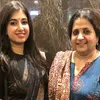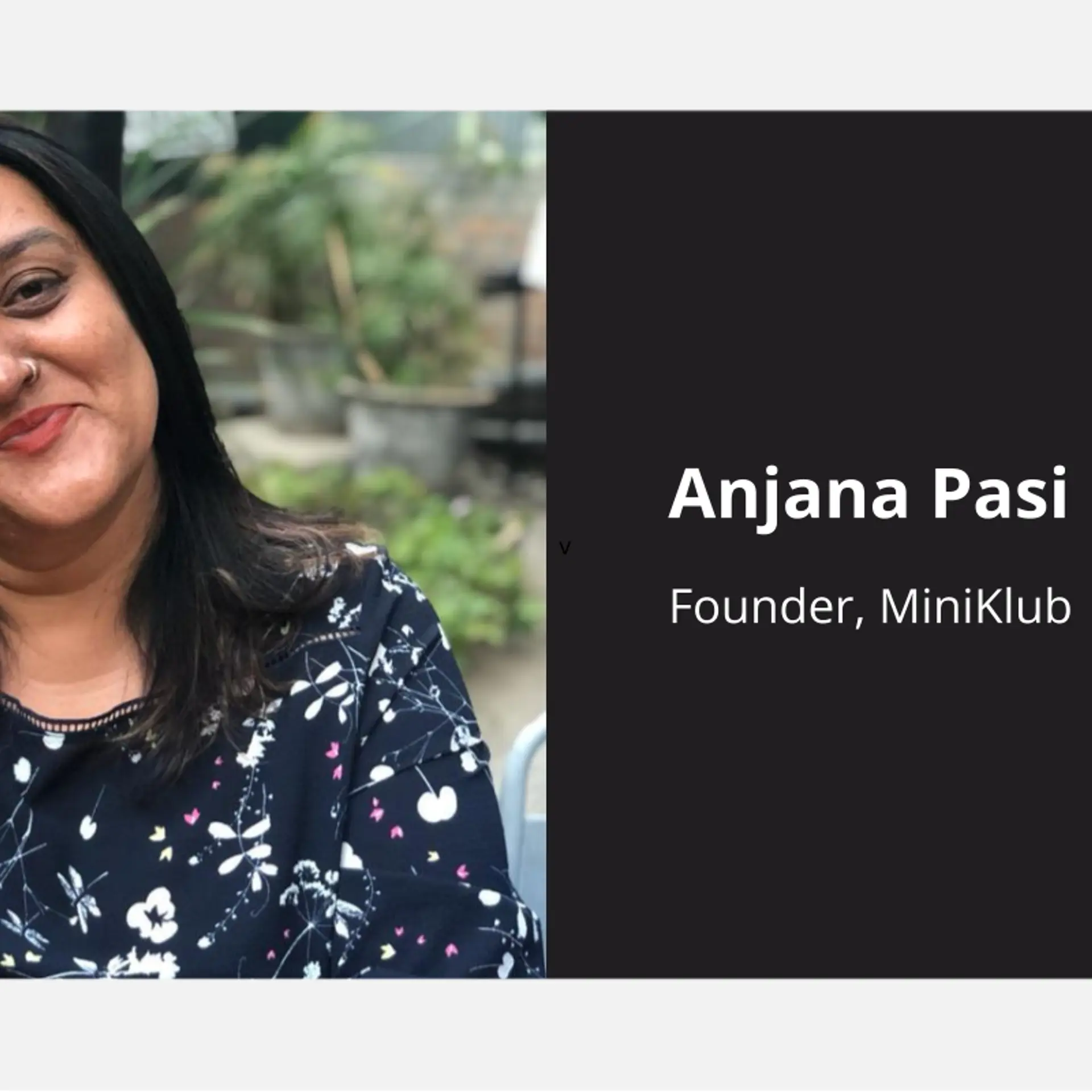With hand-block prints, patchwork and more, how this lifestyle brand is clocking 3K monthly orders and empowering artisans
Pinklay, started in 2015, was witnessing gradual growth until the pandemic hit. During the lockdown, the brand managed to not only grow exponentially, but also provided employment to hundreds of artisans who were striving to make ends meet.
Daisy Tanwani and her husband Mashhood Beg were avid travellers who also loved to shop local while on the move.
During their travels to different countries, Daisy always found some or the other exquisite items to add to her wardrobe or accessories collection, but what surprised her was that all these products had the label, ‘Made in India’. On one such trip to the US, where she found some beautiful handprinted apparels, the first question to hit her was, "Why aren't these available in India?"
It prompted Daisy to make concerted efforts to try and figure out why there were such few brands for handcrafted items In India.
“We found that the artisanal products market was extremely unexplored in India. But the love we saw for handmade products abroad convinced me to start my own brand of handcrafted designs,” Daisy tells SMBStory.
Thus, in 2015, Daisy and Mashhood founded Pinklay from Mumbai.
Walking the path of entrepreneurship
During her travels, when inspiration struck the most, Daisy always conceptualised starting a lifestyle brand. Turning this into reality though seemed easier dreamt than done, as Daisy had neither the background nor the in-depth knowledge required to startup in this industry. She decided to double down, and embarked on extensive market research.
“I was a marketing professional in a fairly well-paying job. Leaving the job to start a business was an exciting idea but a risky one too,” quips Daisy.
She was sure that in order to gain customer loyalty, great quality was crucial, which was only possible if she had full control of the manufacturing process. This led her to form partnerships with artisans, handlooms, and factories.
“It took time, but we managed to convince one of our biggest partners to help us with fabric and artisans, and thus began our journey. We began by making laptop bags, quilts, and toys,” Daisy recalls.
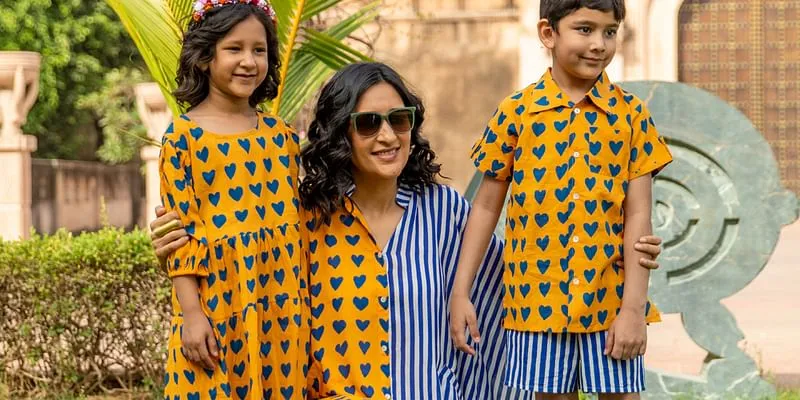
Pinklay's apparel collection
Before laying the foundation of Pinklay, in October 2015, Daisy participated in an exhibition where she showcased her products. To her astonishment, the laptop bags, quilts and handcrafted toys sold out rather quickly, earning her Rs 4 lakh easily. This is when she knew she was on the right path, and soon after, Daisy left her marketing job. In December 2015, she officially launched Pinklay.
What began with two tailors on board, and a handful of SKUs is today a brand that serves across 10 categories - from women’s apparels to kids clothing, furniture, and home decor with art styles from Rajasthan, Uttar Pradesh, West Bengal and Gujarat. Pinklay today designs, manufactures, and sells over 750 unique products in over 30 countries.
All that glitters is not gold
According to Daisy, the company did very well when they just started out, but later in that first year, business started slowing down. Realising there were gaps in their marketing strategy, Daisy was just gearing up to work on it when the demonetisation move was imposed in November 2016. This pushed her back to square one, as many customers cancelled their cash-on-delivery orders overnight.
“We just had to wait for things to settle down. By 2017, we started making gradual progress, and expanded our portfolio to tableware, ceramics, and kids wear. Two years later, we were stable enough to launch our women’s clothing range,” Daisy says.
The first-time entrepreneur had planned on launching her biggest collection in women’s clothing in early 2020, but then the pandemic came calling.
The pandemic moment
Pinklay was witnessing decent growth, introducing new collections, and getting ready to launch a kaftan collection, when in March 2020, came the news of the nationwide lockdown to curb the spread of coronavirus.
“We had stock worth a lot of money, and we felt stuck! There seemed to be no way out, as at the time, we didn't know when the markets would open. Online deliveries were limited to essentials. I was worried I would suffer losses again,” Daisy recalls.
But, tough times call for tough measures, and Daisy did not hesitate here. She went ahead and launched her online collection. “It was a risky time to launch a collection, but I also realised that things don’t always go as planned. I took this step to see if our customers liked the new range or not,” Daisy explains
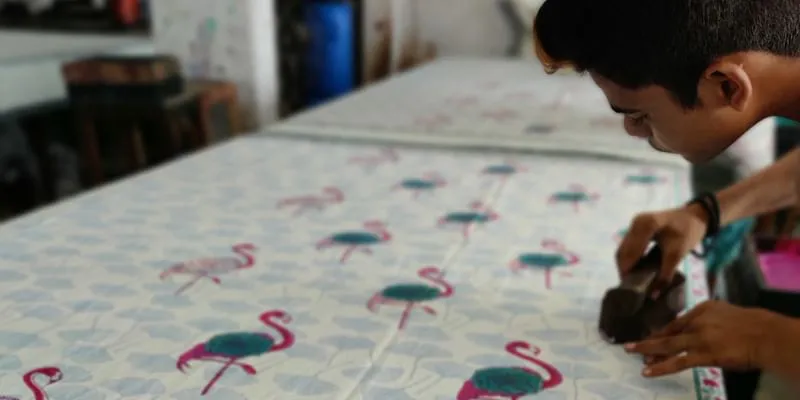
An artisan working on Pinklay's collection
Surprisingly, Daisy’s gamble proved timely, and as soon as restrictions started lifting, orders started pouring in. Although logistics and supply chain were affected, customers started booking in advance, and were willing to wait for up to a month for delivery.
What’s more, the kaftan - an apparel that was earlier ubiquitous with beach side holidays and sunny days - soon started becoming a lockdown essential.
No wonder then that for Daisy, the lockdown turned out to be a blessing in disguise. The kaftans became one of Pinklay’s best selling products followed by other loungewear items like pajamas, tees, kurtis, dresses and so on.
So, while the pandemic hit many small and medium enterprises severely, Pinklay saw exponential growth. So much so that Daisy claims the brand recorded 400 percent growth since early 2020.
Pinklay now competes with the likes of Jaypore, Nicobar, and Ogaan
Social impact
According to Daisy, besides promoting Indian handicraft, Pinklay also aspires to reform the Indian artisan community in the longterm. “We are a brand driven by a larger social purpose, and that's our biggest strength.”
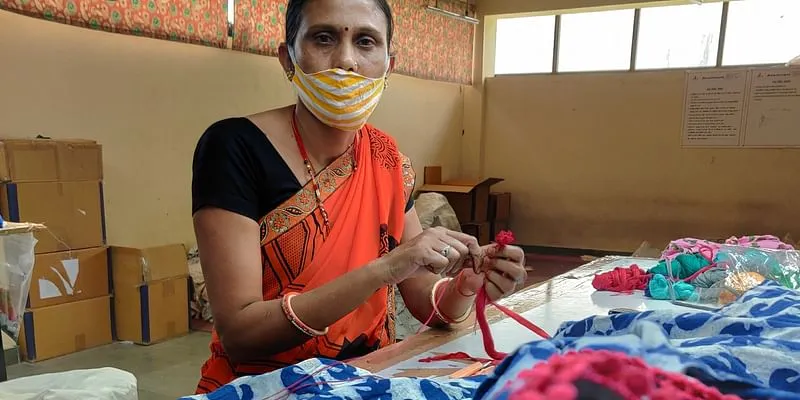
Pinklay's artisan
The brand, which works with more than 400 artisans, hired many out-of-work craftsmen during the pandemic to help them survive. Daisy adds that this also helped Pinklay in the growth it experienced during the pandemic.
“Besides artisans, about 14 families in a nearby village had lost their livelihoods due to the pandemic. We provided them employment by seeking their help in making tassels and pompoms (accessories used in ensembles),” Daisy says.
When asked about revenue, Daisy maintains, “Pinklay’s revenue is a by-product of the impact we make. The number of 000s we add to our balance sheet is exciting but taking people along as we grow, establishing an unapologetic 'Make in India' global brand and generating real value at the grass root level is most important to us.”
Edited by Anju Narayanan



